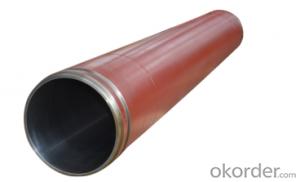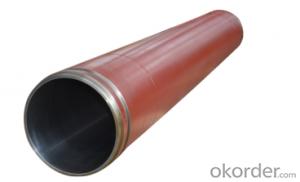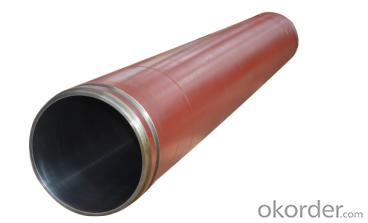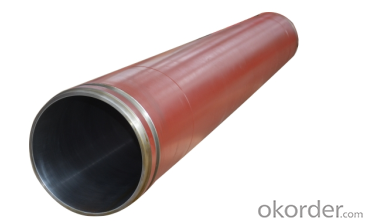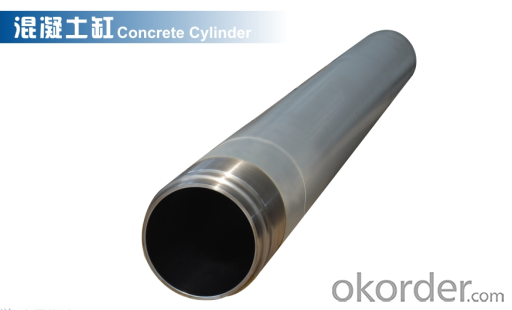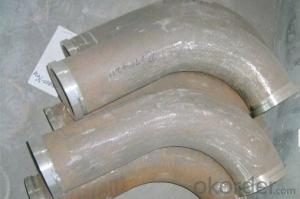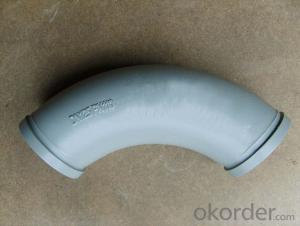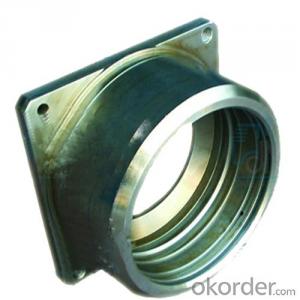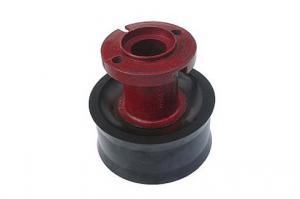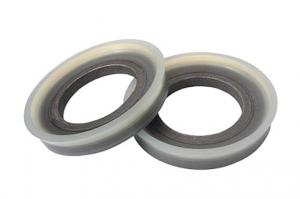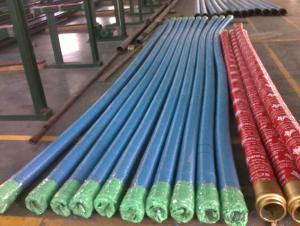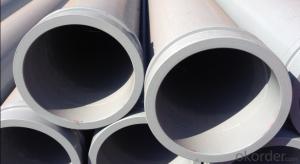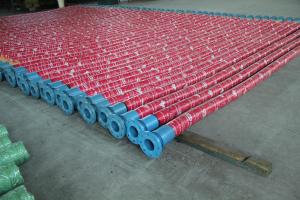DELIVERY CYLINDER(SCHWING ) I.D.:DN180 CR. THICKNESS :0.25MM-0.3MM LENGTH:1775MM
- Loading Port:
- Shanghai
- Payment Terms:
- TT OR LC
- Min Order Qty:
- 2 pc
- Supply Capability:
- 1000 pc/month
OKorder Service Pledge
Quality Product, Order Online Tracking, Timely Delivery
OKorder Financial Service
Credit Rating, Credit Services, Credit Purchasing
You Might Also Like
Packaging & Delivery
| Packaging Detail: | wooden case, seaworthy packing |
| Delivery Detail: | 15 days |
Specifications
Concrete Pump Delivery Cylinder DN230*2100
1. Capacity: 60,000~80,000cbm
2. Size: DN180, DN200, DN230..
4. Brand: PM, Sany,ZM
Concrete Pump Delivery Cylinder DN230*2100
1. Material: C45
2. quenching and tempering to improve the hardness to HB241-280
3. inner wall chrome thickness is 0.25-0.30mm, hardness HV820-900.
4. Brand: SCHWING, PM, SANY, KYOKUTO, CIFA
5. Capacity: 60,000~80,000cbm

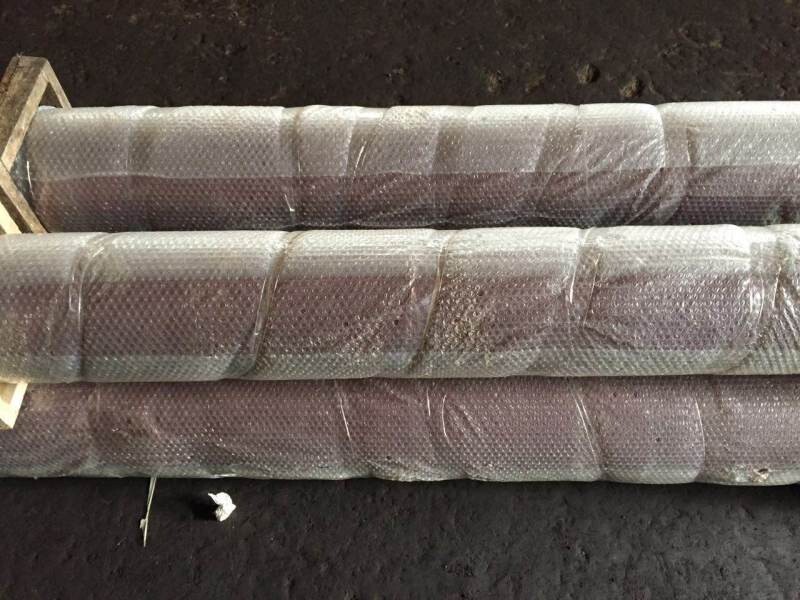

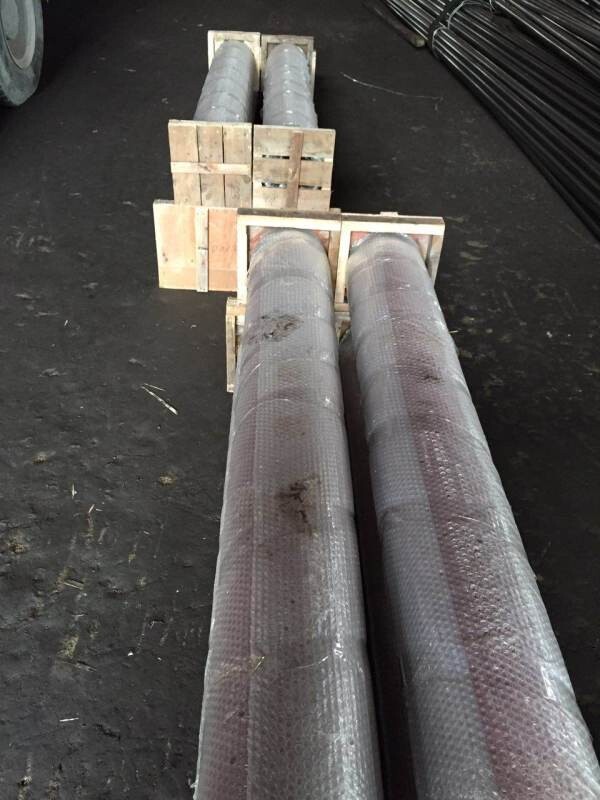
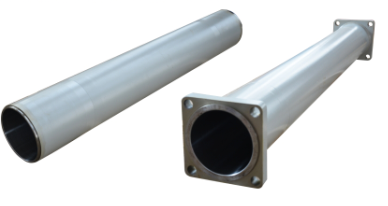
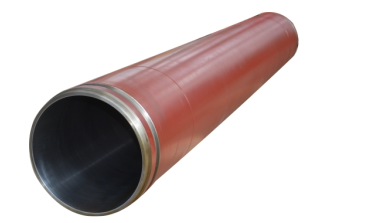
- Q: Are there any specific brands or manufacturers that are recommended for concrete pump spare parts?
- Yes, there are several brands and manufacturers that are highly recommended for concrete pump spare parts. Some of the top brands in the industry include Putzmeister, Schwing, Sany, and Zoomlion. These brands are known for their high-quality products, reliability, and durability. They have a wide range of spare parts available for various models of concrete pumps, ensuring that customers can find the specific parts they need. Additionally, these brands have established a strong reputation in the market and have a vast network of dealers and distributors worldwide, making it easier for customers to access their spare parts. It is always advisable to choose spare parts from reputable brands and manufacturers to ensure the longevity and performance of your concrete pump.
- Q: How can a faulty filter affect the pumping process?
- A faulty filter can significantly affect the pumping process in several ways. Firstly, a faulty filter may become clogged or blocked, hindering the flow of fluid through the pump. This can result in reduced efficiency and increased energy consumption as the pump has to work harder to overcome the resistance caused by the clogged filter. The decreased flow rate can also lead to longer pumping times, which can be problematic in time-sensitive applications. Secondly, a faulty filter may fail to effectively remove impurities or contaminants from the fluid being pumped. This can be particularly problematic in industries where maintaining the purity or cleanliness of the fluid is crucial, such as in pharmaceutical or food processing applications. The presence of contaminants can compromise the quality of the final product or damage equipment downstream from the pump. Furthermore, a faulty filter can lead to increased maintenance and repair costs. If the filter is not functioning properly, it may allow larger particles or debris to pass through, which can cause damage to the pump components. This can result in increased wear and tear, decreased lifespan of the pump, and the need for more frequent repairs or replacements. Lastly, a faulty filter can also pose a risk to the overall system and its components. If the filter fails completely, it may allow foreign objects or particles to enter the pump, leading to potential blockages, damage to internal components, or even complete failure of the pump. This can result in costly downtime, loss of production, and the need for emergency repairs or replacements. In summary, a faulty filter can have detrimental effects on the pumping process, including decreased efficiency, compromised fluid quality, increased maintenance costs, and potential damage to the pump and system components. Regular inspection, maintenance, and timely replacement of filters are essential to ensure smooth and reliable operation of pumps in various industries.
- Q: What are the different sizes of concrete pump pipes available?
- Concrete pump pipe sizes vary based on the unique requirements and specifications of each construction project. Typically, these pipes range in diameter from 2 inches to 6 inches. The most commonly utilized sizes are 2 inches, 3 inches, 4 inches, and 5 inches. The selection of the pipe size depends on several factors, including the concrete's volume and pressure, the distance it needs to travel, and the equipment type. Smaller pipes with a smaller diameter are suitable for shorter distances and lower concrete volumes, while larger pipes are used for longer distances and higher volumes. Choosing the appropriate pipe size is crucial to ensure efficient and safe concrete pumping. By using the correct pipe size, pressure loss is minimized, and a consistent flow rate is maintained. Moreover, it helps prevent blockages or clogs in the system. To determine the most suitable pipe size for a specific construction project, it is advisable to consult with a concrete pumping professional or engineer.
- Q: Are there any environmental considerations in the production of concrete pump spare parts?
- Concrete pump spare parts have several environmental considerations. Firstly, the production process involves the use of various materials and chemicals that can harm the environment. For instance, steel components require the extraction of iron ore and emit greenhouse gases during smelting. Similarly, rubber parts use petroleum-based materials, which contribute to carbon emissions and pollution. Additionally, the disposal of these spare parts after their useful life can create environmental challenges. If not managed properly, they can end up in landfills, leading to waste accumulation and potential soil and water contamination. Hence, it is crucial to consider the recyclability and reusability of these parts during their design and production. To address these concerns, manufacturers can adopt sustainable practices. This includes incorporating recycled materials like steel or rubber into the manufacturing process. Moreover, efficient production techniques can reduce waste generation and energy consumption. Establishing proper waste management and recycling programs is also vital for responsible disposal of these spare parts. Overall, by considering the environmental impacts associated with the production and disposal of concrete pump spare parts, manufacturers can contribute to a more sustainable and eco-friendly industry.
- Q: How can I extend the lifespan of my concrete pump spare parts?
- To maximize the durability of your concrete pump spare parts, there are several essential measures you can take: 1. Maintenance should be a priority: Establish a comprehensive maintenance schedule for your concrete pump, which includes regular examinations, cleaning, and lubrication of the spare parts. By promptly identifying and addressing any issues, you can prevent further harm and prolong the lifespan of the parts. 2. Invest in top-quality spare parts: Consider purchasing high-quality spare parts from reputable manufacturers. While cheaper alternatives may save you money initially, they tend to wear out faster and require frequent replacements. Opting for quality parts guarantees their longevity and durability. 3. Proper storage is crucial: Store your spare parts in a clean, dry, and well-organized environment. Continuous exposure to moisture, extreme temperatures, and dirt can lead to deterioration over time. To shield the parts from dust and other contaminants, consider using protective covers or cases. 4. Train your operators effectively: Proper operation of the concrete pump is vital in preventing unnecessary wear and tear on the spare parts. Make sure your operators receive thorough training and adhere to the manufacturer's guidelines for usage and maintenance. Discourage any misuse or improper handling of the equipment, as this can result in premature wear of the spare parts. 5. Regularly clean your equipment: Ensure that your concrete pump remains clean by regularly removing any concrete buildup. The accumulation of hardened concrete can strain the spare parts and cause premature failure. Utilize appropriate cleaning methods and tools to ensure thorough removal without causing damage. 6. Promptly address repairs: As soon as you identify any issues or damage to the spare parts, address them promptly. Ignoring or delaying repairs can exacerbate the problem and potentially harm other components. Regularly inspect the spare parts for signs of wear, such as cracks, leaks, or excessive vibration, and promptly resolve any concerns. 7. Monitor usage and performance: Keep track of the usage and performance of your concrete pump and spare parts. Regularly assess the wear and tear of the parts and the overall performance of the pump. Analyze any patterns or trends that may indicate potential problems and take corrective actions to prevent further damage. By implementing these measures, you can significantly extend the lifespan of your concrete pump spare parts, ensuring optimal performance and reducing the need for frequent replacements.
- Q: How often should hopper cylinder seals be replaced in a concrete pump?
- The frequency at which hopper cylinder seals should be replaced in a concrete pump depends on several factors such as the quality of the seals, the intensity of usage, and the maintenance practices followed. Ideally, hopper cylinder seals should be inspected regularly for any signs of wear and tear or damage. If there are visible cracks, tears, or leaks, it is recommended to replace the seals as soon as possible to prevent any further damage to the concrete pump. In general, hopper cylinder seals can last anywhere from several months to a couple of years, depending on the aforementioned factors. However, it is essential to establish a preventive maintenance plan and regularly monitor the condition of the seals to ensure optimal performance and minimize downtime. Additionally, it is advisable to consult the manufacturer's guidelines or seek advice from a professional concrete pump technician to determine the specific replacement interval for hopper cylinder seals based on the pump model, usage patterns, and environmental conditions.
- Q: How do I maintain the performance of concrete pump spare parts in extreme weather conditions?
- To ensure the efficiency and longevity of your equipment, it is crucial to maintain the performance of concrete pump spare parts in extreme weather conditions. Consider the following tips: 1. Conduct regular inspections to detect signs of wear and tear early on. Extreme weather can accelerate part deterioration, so staying vigilant is important. 2. Keep spare parts clean to prevent clogging or damage caused by dirt, debris, or contaminants that may accumulate in extreme weather conditions. 3. Use appropriate lubrication for smooth functioning. Opt for lubricants designed for extreme weather, with high viscosity and resistance to temperature fluctuations. 4. Protect spare parts from direct exposure to extreme heat or freezing temperatures by using covers or enclosures. 5. Store spare parts in a dry, temperature-controlled environment when not in use. Extreme weather can cause expansion or contraction, potentially leading to damage. Controlled storage helps maintain integrity and performance. 6. Monitor and replace worn-out parts in a timely manner to maintain performance. Extreme weather conditions can accelerate wear and tear, so proactive replacement is crucial. 7. Consult the manufacturer for specific requirements on maintaining spare parts in extreme weather. They can offer expert advice and guidance for optimal performance. By following these tips, you can effectively preserve the performance of concrete pump spare parts in extreme weather conditions, ensuring smooth and efficient equipment operation.
- Q: How can I determine if the concrete pump cylinder needs replacement?
- In order to determine whether the concrete pump cylinder needs replacement, several inspections and tests can be conducted. 1. Perform a visual inspection and look for any visible signs of wear and tear on the cylinder, such as cracks, dents, or corrosion. Additionally, check for leaks or excessive hydraulic fluid around the cylinder. 2. Evaluate the pump's performance during operation. Pay attention to any decrease in pumping efficiency, irregular flow, or decreased pressure, as these could indicate a problem with the cylinder. 3. Conduct a pressure test to assess the cylinder's ability to handle the required pressure. This can be done by isolating the cylinder and pressurizing it to a level higher than its typical operating pressure. If the cylinder fails to maintain pressure or shows signs of leakage, replacement may be necessary. 4. Measure the stroke length of the cylinder during operation. Uneven stroke lengths may indicate internal damage and could require replacement. 5. If you are uncertain about the cylinder's condition, seek consultation with professionals or experts in the field. They can provide a more accurate assessment and recommend the appropriate course of action, which may include cylinder replacement. Remember that regular maintenance and inspections are essential for the concrete pump's longevity and efficient operation. Addressing potential issues early on can help prevent further damage or accidents.
- Q: Can concrete pump spare parts be ordered in bulk quantities for future use?
- Yes, concrete pump spare parts can be ordered in bulk quantities for future use. This can be beneficial to ensure a continuous supply of spare parts, reduce downtime, and potentially negotiate better pricing and discounts.
- Q: Can concrete pump spare parts be customized with branding or logos?
- Yes, concrete pump spare parts can be customized with branding or logos. Many manufacturers and suppliers offer the option to personalize spare parts with branding or logos according to the customer's requirements. This customization helps in promoting the brand and creating a unique identity for the concrete pump spare parts.
Send your message to us
DELIVERY CYLINDER(SCHWING ) I.D.:DN180 CR. THICKNESS :0.25MM-0.3MM LENGTH:1775MM
- Loading Port:
- Shanghai
- Payment Terms:
- TT OR LC
- Min Order Qty:
- 2 pc
- Supply Capability:
- 1000 pc/month
OKorder Service Pledge
Quality Product, Order Online Tracking, Timely Delivery
OKorder Financial Service
Credit Rating, Credit Services, Credit Purchasing
Similar products
Hot products
Hot Searches
Related keywords
